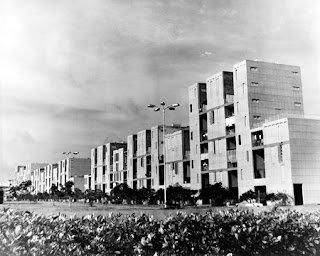Cambodia’s
political system is Constitutional Monarchy in the form of democracy. She
locates on the Indochina Peninsular in the South East Asian region. She covers
the territory of 181,035 sq km bordering with Thailand in the north and west,
Laos in the north, Vietnam in the east and southeast, and the Gulf of Thailand
in the south and southwest. Her population is around 15 million people; her
capital is Phnom Penh City with the population of over 1.5 million people. Her
formal religion is Buddhism following by Islam, Christian, animism, etc. Her
most famous temple is Angkor Wat Temple in Siem Reap. Her economy is based on agriculture,
tourism, and SMEs (Small & Medium Enterprises). Her important natural site
embraces Tonle Sap Lake (The Great Lake), Kravanh Mountain Range (Cardamom
Mountain), Dangrek Mountain Range, Coastal Area, etc.
ASEAN
stands for Association of South East Asian Nations. It was established on
August 08th, 1967 in Bangkok City, Thailand with five members such
as Indonesia, Singapore, Thailand, Philippine, and Malaysia. Until now there
are ten members in which other five members are new such as the following:
v
Brunei got into ASEAN in 1984.
v
Vietnam got ASEAN membership in 1995.
v
Myanmar and Laos got ASEAN membership in 1997.
v
Cambodia got into ASEAN on April 30th,
1999.
With the establishment since 1967, the Association of
South East Asian Nations has the aims and purposes are:
v To
accelerate the economic, social, cultural, technical, educational and other
fields.
v To
promote of regional peace and stability.
v To
promote Southeast Asian studies
v To
provide assistance to each other in form of training and research facilities
v To
maintain close and beneficial cooperation with existing international and
regional organization with similar aims and purposes.
From
year to year, ASEAN has been doing the best performance to achieve the above
aims and purposes. The achievement by ASEAN since the day of establishment till
today is being considered towards the future like:
v
The agreement on Zone of Peace, Freedom, and
Neutralization (ZOPFAN) in 1971, Kuala Lumpur.
v
Treaty of Amity and Cooperation (TAC), The
Declaration of ASEAN Concord I, and the agreement for the establishment of the
ASEAN Secretariat in 1976, Bali.
v
ASEAN Free Trade Area (AFTA) in 1992.
v
ASEAN Regional Forum (ARF) in 1994.
v
The establishment of ASEAN Maritime Forum in
2003, Bali.
v
The establishment of ASEAN Charter in 2005,
Kuala Lumpur.
v
ASEAN Summit every year.
v
The establishment of ASEAN Development Fund (ADF),
etc.
By: POK Panhavuth




























